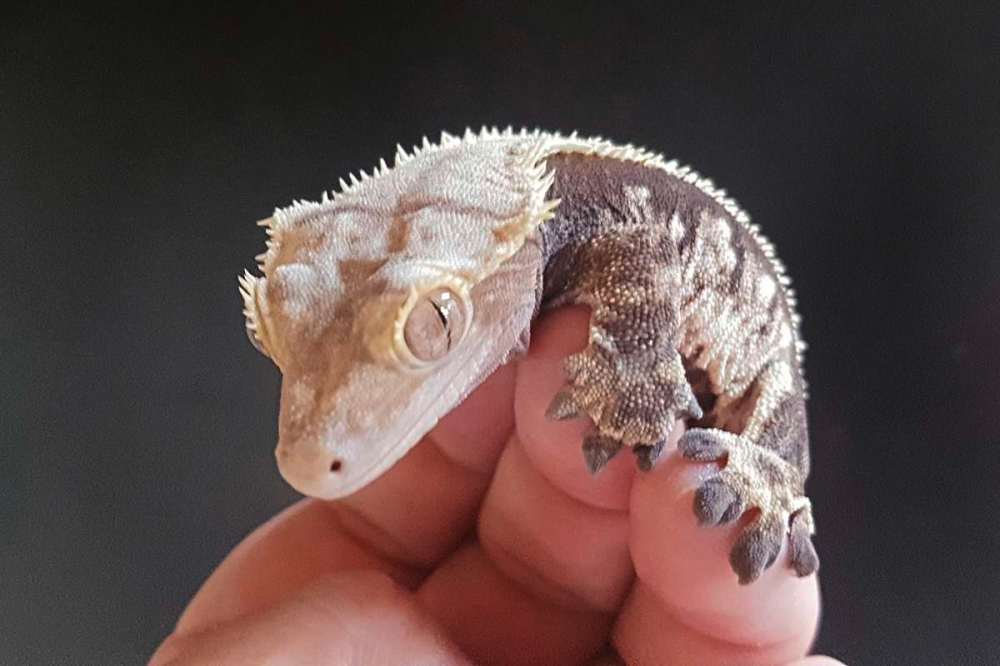Caring for geckos is fairly easy
Advertisement
Hey there, time traveller!
This article was published 07/08/2019 (2279 days ago), so information in it may no longer be current.
Over the past 15 years, crested geckos have become one of the more popular reptile pets.
There is good reason for that. They are fun, easy to care for, affordable, both to purchase and to house, and best of all, they do not require any “icky” types of food. No live crickets, no worms, no defrosted rodents. A simple paste that you make from a powder and some water, that you can prepare ahead of time and freeze, and feeding is as simple as breaking off a bit and putting into their dish. Easy peasy.

Crested geckos were thought to be extinct until they were rediscovered around 1994 by a few expeditions into the islands of New Caledonia, in the Pacific Ocean halfway between Australia and Fiji. Here they live in temperate rainforests, not your typical jungle habitat, but close. From a few wild imported specimens, these animals gained rapid popularity, and commanded very high prices initially. Fortunately, they are very prodigious breeders, and their numbers blossomed in captive breeding programs. But around 2002, they were starting to find their way into pet stores, although at very high prices, up to $500 each. It didn’t take long for that to drop, and by 2010, they could be found for under $100.
While they are flourishing here, their habitat is being threatened, and while they seem like they wouldn’t have much impact on an ecosystem, they play a valuable role in controlling certain species of insects that, without the gecko, would be able to reproduce unchecked, and become a danger to the ecosystem. Conservation efforts are taking place, including having them listed as an endangered species, and hopefully they will be spared the fate of going extinct in the wild.
As with any pet, there are no limits to how much you can spoil them, and no limit to what you can spend on their habitat. For a single animal, you should use at least a 12-inch-long by 12-inch-wide by 18-inch-high enclosure. These terrariums are reasonable priced, usually under $100, and cost less than $50 to outfit with decorations, substrate, food and dishes. Many stores offer a discount on the animal when you buy the enclosure, so it is quite easy to get a complete set up with animal for under $200.
If you want to have more than one (and no, they don’t need to be kept in multiples, they are solitary animals) then we recommend a much larger enclosure, like an 18x18x24. This can house a number of Cresties together, as long as there is no more than one male in the enclosure. Two males will usually fight, especially in the presence of a female. I have seen an occasion where a group of three males were kept together from hatchlings, without any females in the cage, and they got along. This can happen, but it is rare, and I don’t recommend trying to make it happen.
When buying a crestie, I recommend buying a larger one, as they are a lot more durable than hatchlings. It is cool to watch them grow, sure, but hatchlings should not be handled, and are easily damaged if the environment is not just right. By selecting a larger one, you can handle it from day one, and not worry as much.
Many places offer a discount on “doberman” or “frogbum” cresties – animals that have dropped their tails. Tailless geckos live exactly the same as ones with tails, and you don’t have to worry about them dropping their tail. It doesn’t always happen, but something as simple as getting their tail caught in the terrarium door by accident can induce them to lose their tail, which is a lot more traumatic for us than it is for them.
No special heat, no special lighting, room temperature and light are sufficient in most cases. Cold rooms might require supplemental heat, and they should never be in direct sunlight, but other than that, pretty simple. Keep the enclosure slightly moist, and feed their premix food daily, and you will have a very happy pet.
Contact Jeff with your questions or ideas atthrivepetfoodmarket@shaw.ca or visit www.thrivepetfoodmarket.com

Jeff McFarlane
Pets Are People, Too
Jeff McFarlane is the owner of Thrive Pet Food Market. Contact him with your questions or ideas thrivepetfoodmarket@shaw.ca or visit www.thrivepetfoodmarket.com
Our newsroom depends on a growing audience of readers to power our journalism. If you are not a paid reader, please consider becoming a subscriber.
Our newsroom depends on its audience of readers to power our journalism. Thank you for your support.




